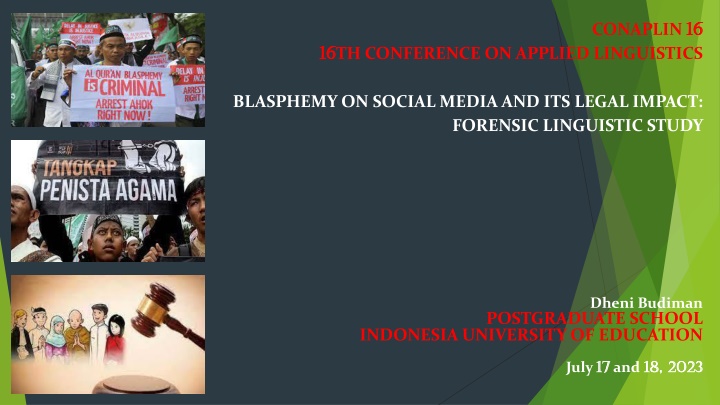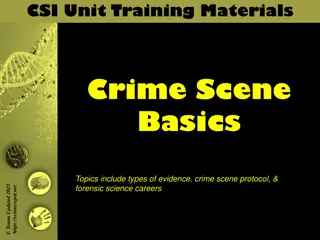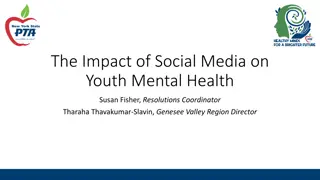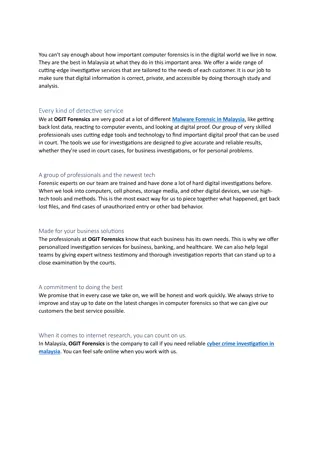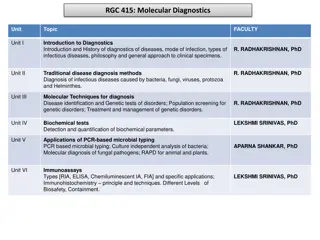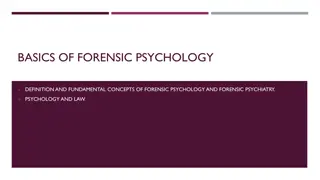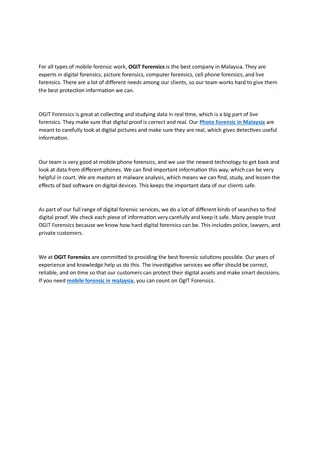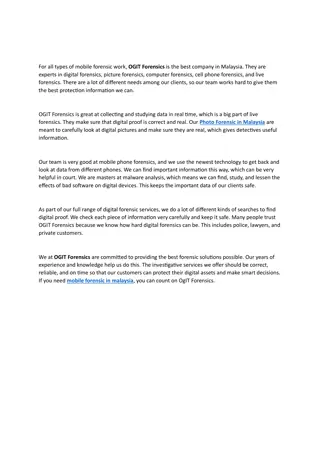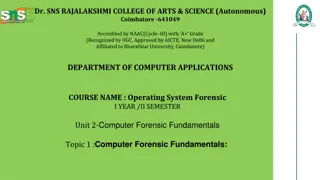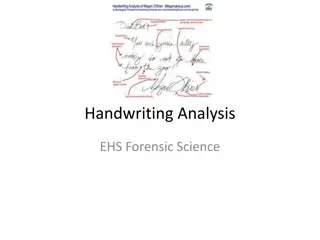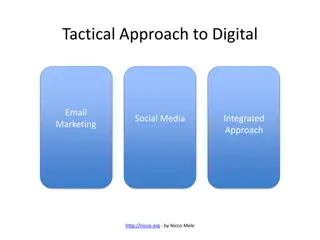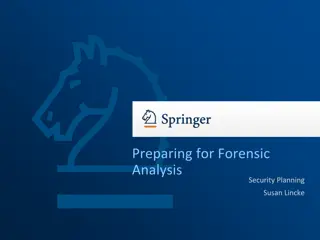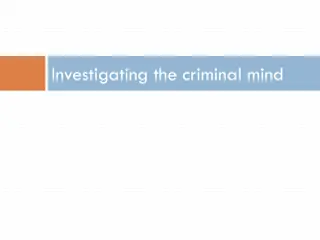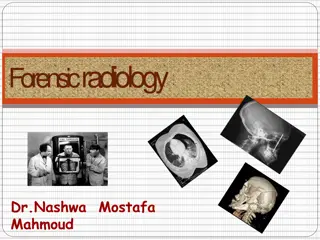Impact of Blasphemy on Social Media: Forensic Linguistic Analysis
Language plays a crucial role in human communication, especially on social media platforms where public speech can have legal consequences. This research delves into the concept of blasphemy on social media and its legal implications, focusing on linguistic forensic study. It explores how language crimes can lead to legal actions based on judges' decisions from the Supreme Court directory. The study aims to identify issues and analyze the impact of blasphemy on social media through a forensic linguistic lens.
Download Presentation

Please find below an Image/Link to download the presentation.
The content on the website is provided AS IS for your information and personal use only. It may not be sold, licensed, or shared on other websites without obtaining consent from the author.If you encounter any issues during the download, it is possible that the publisher has removed the file from their server.
You are allowed to download the files provided on this website for personal or commercial use, subject to the condition that they are used lawfully. All files are the property of their respective owners.
The content on the website is provided AS IS for your information and personal use only. It may not be sold, licensed, or shared on other websites without obtaining consent from the author.
E N D
Presentation Transcript
CONAPLIN 16 16 16 16TH CONFERENCE ON APPLIED LINGUISTICS BLASPHEMY ON SOCIAL MEDIA AND ITS LEGAL IMPACT: FORENSIC LINGUISTIC STUDY Dheni Budiman POSTGRADUATE SCHOOL INDONESIA UNIVERSITY OF EDUCATION July 17 17 and 18, 2023 18, 2023
RESEARCH CONCEPT OF BLASPHEMY ON SOCIAL MEDIA AND ITS LEGAL IMPACT (FORENSIC LINGUISTIC STUDY) LANGUAGE DATA OF BLASPHEMY: DECISIONS OF JUDGES (VERDICTS) FROM THE DIRECTORY OF THE SUPREME COURT FORENSIC LINGUISTICS PRAGMATICS (SPEECH ACT) APPRAISAL SYSTEM ANALYSIS RESEARCH QUESTIONS / IDENTIFICATION OF PROBLEMS RESULT OF THE RESEARCH
BACKGROUND Language is one of the important communication tools in human life. Through language, humans can interact with each other. In conveying opinions or ideas, humans can do it orally or in writing. Social media (virtual space) such as; Facebook, Twitter, Instagram, YouTube, and so on allows humans to carry out social interactions by means of commenting posting, writing, and Posting status, writing, speech or utterance on social media which is a public space can have a legal impact if there are other parties who feel offended, humiliated, aggrieved and insulted by the writing or utterance. Likewise, if utterances or writings are sent via social media which are considered to contain elements of language crime, they can be prosecuted or sued legally.
Indonesia is not a religious state, but the state guarantees freedom of religion, with reference to the 45 Constitution, article 28E paragraphs (1) and (2) and article 29 paragraph (2). Article 28E (1) confirms that every one has the right to embrace a religion and to worship according to his religion, choose education and teaching, choose a job, choose citizenship, choose a place to live in the territory of the country and leave it, and has the right to return. (2) "Everyone has the right to freedom of belief, express thoughts and attitudes, according to his conscience", Article 29 paragraph (2) confirms that "The state guarantees the freedom of each of its inhabitants to embrace their respective religions and to worship according to their religion and each other's beliefs." This implies that the state is obliged to make laws and regulations or carry out policies for the implementation of a sense of faith in God Almighty. In addition, the state is obliged to enact laws and regulations that prohibit anyone from harassing religious teachings.
Every applied linguistic research that is carried out requires certainty that linguistic analysis must have reasons and clear relationships so that it can be applied in the context at hand. Based on this, this linguistic analysis is carried out practically in the realm of law on the grounds that law enforcement is essentially a language activity and is also influenced by factors other than language. The legal study here is a background that functions as a context that influences the law itself. While linguistic study is the analytical knife. The linguistic theories used are speech act theory (Austin, 1962:1) and appraisal system theory (Martin, 2005:1). Based on a literature search, forensic linguistic research on blasphemy through social media (virtual space) or utterances, direct speech (conventional space) has been carried out a lot, including those carried out by Jazuli A. (2017), Priatna MGA (2017), Rana Fajar Rahman et al (2017), Syahid (2022), Hendrastuti, Retno (2019), Setiabudi M. et al, (2022), Yogi, Muhammad et al (2020), Hatta M. et al (2021), Lintang et al (2021), Devit et al (2021).
RESEARCH QUESTIONS: 1. How is the lexical meaning that appears in blasphemy on social media which has legal impact? 2. How is the purpose of blasphemy on social media ? 3. How is the legal impact of blasphemy on social media? RESEARCH PURPOSES: 1. To find out what lexical meanings appear in blasphemy on social media which has legal impact 2. To find out the purpose of blasphemy on social media 3. To uncover and describe the legal impact of blasphemy on social media.
THEORETICAL USE: is expected to contribute to the development of linguistics in general, and forensic linguistics in particular. PRACTICAL USE: is expected to encourage language practitioners (lecturers, teachers, researchers, students, lawyers) to conduct research on blasphemy issues, and make it a source of knowledge, understanding, and enlightenment for the general public in using social media. In speaking on social media, such as twitter, facebook, whatsApp, instagram which is a public space where everyone can access and use it, one should be honest, polite and wise and use words that are kind, polite and not condescending. , not insulting, not expressing hatred of other religions in order to avoid being caught by the law or laws in force in the Republic of Indonesia
METHOD This research approach is a qualitative approach, namely the data collected are not in the form of numbers, but the data are taken from social media, objectively describing blasphemy. The specification of this research is descriptive in nature, namely describing and describing and analyzing the phenomenon of religious desecration on social media which has legal impact. This type of research is descriptive-analytical research, namely a method that describes, objectively describes blasphemy. This study uses a forensic linguistic approach
THEORITICAL FRAMEWORK FORENSIC LINGUISTICS Forensic linguistics is a part of linguistics that examines linguistic phenomena related to legal cases. The linguistic theory that will be used is pragmatics in which there is a theory of speech acts, which is one of the linguistic theories which sees an utterance containing an action as a functional unit in a communication event that takes into account aspects of the speech situation. The emergence of the term forensic linguistics as a branch of linguistics focused on language studies in the legal realm has marked the activities of language studies applied in the legal context in modern times. Operationally, forensic linguistics can be interpreted as a linguistic methodology for solving factual problems related to disputes and law enforcement (Heydon, 2005: 25). Forensic linguistics develops through various studies. The history of the birth of forensic linguistics is always associated with the actions taken by a linguistics professor from England, Jan Svartvik, who succeeded in solving problems in the context of punishment in his country. This incident is always referred to as a historical fact that marked the birth of forensic linguistics in the modern era (Gibbons, 2003).
PRAGMATICS Austin (1962) states that basically when someone says something, he also does something. This statement then underlies the birth of speech act theory. Yule (1996) defines speech acts as actions performed through utterances. Whereas Cohen (in Hornberger and McKay (1996) defines a speech act as a functional unit in communication. So it can be concluded that a speech act is an utterance that contains an action as a functional unit in communication which considers aspects of the speech situation According to Tarigan (1985:34) pragmatics is a general study of how context influences the way a person interprets sentences. Another opinion was conveyed by Leech (1993:1) that one cannot really understand the nature of language if one does not understand pragmatics, namely how language is used in communication. This statement shows that pragmatics cannot be separated from the use of language. One area of pragmatics that stands out is speech acts. Pragmatics and speech acts have a close relationship. This can be seen in the field of study. Broadly speaking between speech acts and pragmatics discusses the meaning of speech according to the context.
SPEECH ACT Speech act is a theory that is central in the study of pragmatics. Therefore, the concept of speech acts is considered as the main thing in pragmatic study. Speech acts are believed to be the basis for analyzing other pragmatic topics, such as presuppositions, implicatures, cooperative principles, and politeness principles. Austin said that in essence when someone says something, then actually that person is also taking an action. Speech acts and speech events are closely related. These two things are symptoms (phenomena) that can be found in the process of verbal communication. Speech event is a social event because it involves parties who speak in a certain place and situation. Speech events, in essence, contain a series of speech acts organized by the participants to achieve the goal or purpose of communication. Based on this, speech acts are part of speech events. Therefore, speech acts always exist and cannot be separated from speech events.
APPRAISAL SYSTEM THEORY : Appraisal analysis is the development of functional systemic linguistics (LSF) in the realm of interpersonal meaning. In LSF when someone uses language, he uses three metafunctions at once, as Eggins (1994) argues as follows: Appraisal is an interpersonal meaning system that is used in order to negotiate social relations, by showing the reader what the author feels about the world, or people (Martin & Rose, 2007). The evaluative meaning described by the Appraisal framework provides a mechanism by which the interpersonal metafunction operates in expressing the feelings, tastes and opinions of the writer/speaker, with a certain intensity so as to indicate the position of the writer/speaker in a particular communicative context. Appraisal examines meaning through three main aspects, namely attitude, graduation, and engagement. Attitude is a positive or negative assessment. Graduation is the intensity of conveying an attitude, or the act of strengthening or weakening an attitude. Engagement is a source or respondent referred to by the author's proposition. These three things are commonly called the language of evaluation which is a medium for expressing the author's involvement in the text he writes.
RESULTS AND DISCUSSION Case and Decision Number (1) Blasphemy Data (2) Lexical Meaning (3) Purpose (4) Legal Impact (5) No 1. Case And Decision Number Gernal Lundu Nainggolan Alias Gernal Alias Bang Cuek Male / Christian Honorary employee Nomor 372/Pid.Sus/2020/PN Sim 2. Blasphemy Data entah apalah yang kalian banggakan dari si muhammad si tukang main itu , kalian-kalian itu adalah sampah , Habib Bahar itu adalah ustad sampah tikus
3. Lexical Meaning The word si in the sentence entah apalah yang kalian banggakan dari si muhammad si tukang main itu , according to KBBI page 1058 contains meaning; 1). words used in front of personal names that are less respectful, 2). words that are used in front of people's names to insult, 3) words of ridicule, mock 4). a word used before the name of a plant or animal. Thus, Prophet Muhammad SAW (the person who is exalted, adored, respected and became a role model for moslems all over the world was equated, aligned, with animals, humiliated in dignity by the defendant. The phrase Si tukang main according to KBBI page 697 refers to a person who likes to have a date and sleep with women. This explains and describes that the Defendant Prophet Muhammad SAW of frequently changing women to sleep with. accused
The word sampah in the sentence kalian-kalian itu adalah sampah according to KBBI page 990 means; 1). objects or items that are discarded because they are no longer used; 2) despicable. The words kalian-kalian referes to moslems, because Prophet Muhammad SAW is close related and cannot be separated from moslems, Islam. It is clear that the Defendant considered moslems to be useless and despised human beings. This has also made moslems feel angry because they have been humiliated and insulted. The word tikus in the sentence Habib Bahar itu adalah ustad sampah tikus according to KBBI page 1191 means rodents, harmful pests both at home and outside the home, rice fields. The defendant in this case considered Habib Bahar to be a person, an Islamic religious figure who was useless and was detrimental to other people. Meanwhile, according to moslems that Habib Bahar is one of the figures of the Islamic religion who is highly revered, respected by moslems. This is what has made moslems angry because an Islamic leader is likened to a pest that is not useful at all.
4. Purpose: Contexts: The defendant Gernal Lundu Nainggolan Alias Gernal Alias Bang Cuek, on Thursday 14 May 2020 at around 21.00 (Western Indonesian Time), at a coffee shop owned by the Defendant located in Huta II Bandar Pulo, Bandar Pulo District, Simalungun Regency, through a Facebook post, deliberately and without rights disseminated information that intended to insult Prophet Muhammad SAW, moslems, and a religious leader of Islam (Habib Bahar) LocutionaryAct: The locutionary act carried out by the Defendant Gernal Lundu Nainggolan was by sharing or posting news containing the words entah apalah yang kalian banggakan dari si muhammad si tukang main itu , kalian-kalian itu adalah sampah , Habib Bahar itu adalah ustad sampah tikus IllocutionaryAct: Based on the communication function, the speech made by the Defendant Gernal Lundu Nainggolan was a speech act that showed demeaning, insulting, Prophet Muhammad SAW, Moslems and one of religious leaders of Islam (Habib Bahar). This condescension was carried out by ridiculing and denouncing, namely by using words or phrases or sentences entah apalah yang kalian banggakan dari si muhammad si tukang main itu , kalian-kalian itu adalah sampah , Habib Bahar itu adalah ustad sampah tikus
Based on the analysis of the appraisal system, the defendant's utterances of blasphemy can be seen from his attitudes. Through the Defendant's Facebook account, he conveyed his judgment on the Prophet Muhammad SAW, moslems and Habib Bahar, as one of the Islamic religious leaders by writing entah apalah yang kalian banggakan dari si muhammad si tukang main itu , kalian-kalian itu adalah sampah , Habib Bahar itu adalah ustad sampah tikus where the assessment is a negative assessment (negative judgment). When it is viewed or studied from the analysis above, the blasphemy committed by the defendant intended to insult, tarnish and demean Prophet Muhammad SAW, moslems and Habib Bahar, as one of Islamic religious leaders
5. Legal Impact: The defendant Gernal Lundu Nainggolan has been proven legally and convincingly guilty of committing a crime by intentionally and without rights disseminating information aimed at creating feelings of hatred or hostility towards certain individuals and/or community groups based on ethnicity, religion, race and inter-group (SARA) as regulated and subject to criminal penalties in Article 45 Aparagraph (2) in conjunction with Article 28 paragraph (2) of the Law of the Republic of Indonesia Number 19 of 2016 amendment to the Law of the Republic of Indonesia Number 11 of 2008 Concerning Information and Electronic Transactions as in the Second indictment Public Prosecutor; 2. Sentenced a sentence against the Defendant Gernal Lundu Nainggolan Alias Gernal Alias Bang Cuek with imprisonment for 1 (one) year and 6 (six) months reduced as long as the Defendant is in temporary detention by order for the Defendant to remain detained
CONCLUSIONS 1. The lexical meaning of blasphemy on social media that appears as research data is categorized into 6 (six) groups, namely: a. The spoofing of holly verses, as can be seen in ALLAHUMA kini zaman sulit, wa ini bulan azaib, kesana kesini cari cari duit, mau pinjam duit wah amat sulit, kawan kawan pada pelit, kepala sakit perutpun melilit, tidurpun sulit pemasukan sedikit, aww kepala ini rasanya atit, kali ada rizki rizki sedikit, kirimin kirimin , b. Comparing humans to animals, as can be seen in the phrase Dasar Islam Anjing , sentence Habib Bahar itu adalah ustad sampah tikus , c. Comparing humans to supernatural being, ghost as can be seen in sentence Wei Islam Setan , d. Dubbing and pointing at certain parts of the human body (vitals) as can be seen in sentence Masjid Kayak Kontol Aku , and phrase Islam Kontol , e. Calling someone something dirty, worthless, useless, unimportant thing as can be seen in the sentences kalian- kalian itu adalah sampah , Habib Bahar itu adalah ustad sampah tikus , f. Calling, referring to someone with a disrespectful, impolite address, as can be seen in sentence entah apalah yang kalian banggakan dari si muhammad si tukang main itu
2. Blasphemy is uttered on social media to express dislike and negative things towards a religion, person, institution or organization. The purpose of blasphemy on social media is utterances to express dislike, hate, insult, slander, humiliate, demean and demean the religion of Islam, moslems, Prophet Muhamad SAW, and one of religious leaders who must be respected and appreciated by all religious communities in Indonesia. 3. The legal aspect of blasphemy on social media such as Twitter, Facebook, WhatsApp and Instagram have characters which are very easy to implement, easily spread widely and known to the public, can be carried out by all users, from children to adults and the elderly. and the direct impact is the formation of public opinion with different perceptions which leads to disharmony, and divisions among religious communities in Indonesia. The impact of blasphemy laws against one particular religion (Islam, moslems, Prophet Muhammad SAW, religious leaders) on social media is the imposition of sentences or sentences by court judges against defendants who are proven to have uttered words blasphemy in public spaces or social media. As for the articles imposed on the defendants, namely Article 207 of the Criminal Code regarding Insulting public authorities, and Article 45A paragraph (2) jo. Article 28 paragraph (2) RI Law No. 19 of 2016 concerning Amendments to RI Law No. 11 of 2008 concerning Information and Electronic Transactions.
Recommendations: 1. Social media is a public space (Twitter, Facebook, WhatsApp, Instagram) where everyone can access and use it any time. One should pay attention to ethics, manner, be honest, polite and wise and use words that are kind, respect each other, pay attetion to applicable rules in order to avoid being caught by laws in force in the Republic of Indonesia. 2. In using social media (Twitter, Facebook, WhatsApp and Instagram), every person or social media users should not utter words, dictions or sentences that are offensive, slanderous, threatening, insulting, underestimating, condescending, expressing hatred, degrading the dignity of other people which are guaranteed by law: 3. Blasphemy should not be occurred if social media users are wise, do not offend and link SARA in posting statuses so as to provide a sense of security, comfort and harmony for all parties. And it is hoped that other studies related to forensic linguistic studies pertaining to blasphemy can be a solution to this sensitive problem in a pluralistic society so that society will further increase awareness and comprehensive understanding of the diversity of religious life in Indonesia.
REFERENCES: Austin, Jhon Langsaw (1962). How To Do Things with Words. Cambridge: Harvard University Press. Cotteril, J. (2003). Language and power in the court: A linguistic analysis of the O.J. Simpson trial. Houndmills: Palgrave. Devit. (2021). Pertanggungjawaban Pidana Pelaku Penistaan Agama Melalui Media Sosial Ditinjau Dari Undang- UndangInformasi Dan Transaksi Elektronik. Scientia Journal: Jurnal Ilmiah Mahasiswa.Vol.3 Nomor 1 Gibbons, J. (2013). Forensic Linguistics, an Introduction to Langguage In the Justice System. Oxford: Blackwell Publishing. Hatta, M., & Zulfan, H. (2021). Kejahatan Penistaan Agama Dan Konsekuensi Hukumnya. Al-Adl : Jurnal Hukum, 13(2), 342. https://doi.org/10.31602/al-adl.v13i2.4532 Hendrastuti, Retno. (2019). Sikap Media Asing Dalam Menyoroti Kasus Penistaan Agama (Foreign Media Attitude to Highlight Ahok s Blashphemy Case). Bale Bahasa Jawa Tengah. Sawerigading, Vol. 25, No. 2, Desember 2019: 75 84 Heydon, G. (2005). The Language of Police Interviewing. Hampshire: Palgrave Macmillian. Hornberger, Nancy H., & McKay Sandra Lee (2010).. Sociolinguistics and Language Education. Vol.18. Multilingual Matters. Jazuli, Ahmad (2017). PENYELESAIAN KONFLIK PENODAAN AGAMA DALAM PERSPEKTIF HUKUM PIDANA DI INDONESIA (Conflict Accomplishment of Blasphemy in Indonesia`S Criminal Law Perspective): Jurnal Pendidikan Hukum De Jure Volume 17, Nomor 3, September 2017,Akreditasi LIPI: No:740/AU/P2MI-LIPI/04/2016 Leech, G. (2014). Principles of Pragmatics. Routledge.
Lintang, L. C., Martufi, A., & Ouwerker, J. W. (2021). The Alternative Concepts of Blasphemy Law in Indonesia: Legal Comparison with Ireland and Canada. Bestuur, 9(1), 13 25. https://doi.org/10.20961/bestuur.v9i1.51632 Marmor,A. (2013). Truth in Law. Law and language, 45-61. Martin J. R., & White P.R.R. (2007). The Language of Evaluation: Appraisal in English. London: Palgrave. Priatna, M. G. A., & RAS, H. (2017). Tindak Pidana Penodaan Agama Oleh Pemeluknya Melalui Media Nternet Berdasarkan Undang-Undang Nomor 19 Tahun 2016 Tentang Perubahan Atas Undang-Undang Nomor 11 Tahun 2008 Tentang Informasi Dan Transaksi Elektronik Dan Kitab Undang-Undang Hukum Pidana (Kuhp). WACANA PARAMARTA: Jurnal Ilmu Hukum, 16(3), 139 148. Sobari, M., Desiyanti, A., Yanti, D., & Monika, P. (2023). Comparison of Spatial Weight Matrices in Spatial Autoregressive Model: Case Study of Intangible Cultural Heritage in Indonesia. 7(1), 244 261. B Setiabudi, Mukhlisa, Mau M, Bahfiarti T (2022). Framing Berita Penistaan Agama M. Kece dalam Portal Berita Kompas. Com EdisiAgustus 2021: Jurnalisa Vol 08 Nomor 1/Mei 2022, https://doi.org/10.24252/jurnalisa.v8i1.26735 Syahid, Agus et. al (2022). Perundungan Siber (CyberBullying) Yang Bermuatan Penistaan Agama Di Media Sosial Yang Berdampak Hukum: Kajian Linguistik Forensik. Volume 11, No. 1, February. DOI 10.22460/semantik.vl lil.p17-32 Tarigan, H. G. (2009). Pengkajian Pragmatik. Angkasa. Tiersma, P. M. (2010). Parchment, paper, pixels: Law and the technologies of communication. Chicago: University of Chicago Press. Wijana, I Dewa Putu. (1996). Dasar-dasar Pragmatik. Yogyakarta:Andi Yogi, Muhammad, et. al. (2020). Tinjauan Yuridis Tentang Peran Kepolisian Dalam Melakukan Pencegahan Penyalahgunaan Tindak Pidana Penodan Agama. Jurnal Pionir LPPM Universitas Asahan Vol. 6 No. 1 Januari Yule, G. (1996). Pragmatics. Oxford: Oxford University Press.
Hatur Nuhun Kana perhatosannana Thank you very much For your attention
